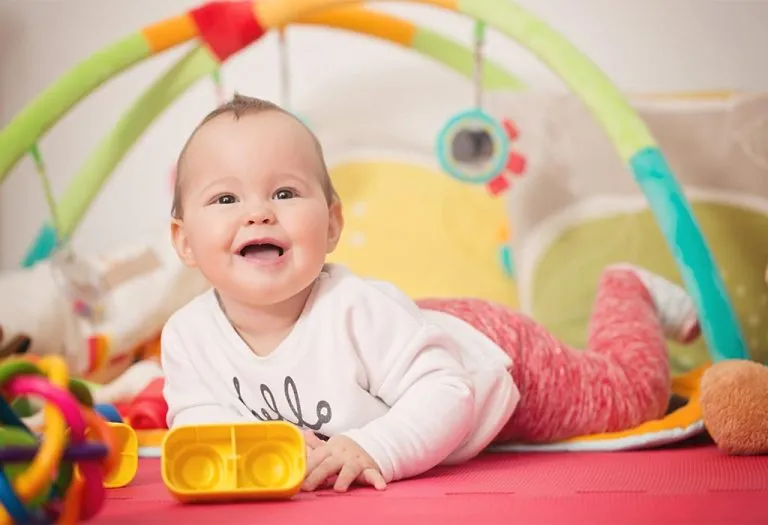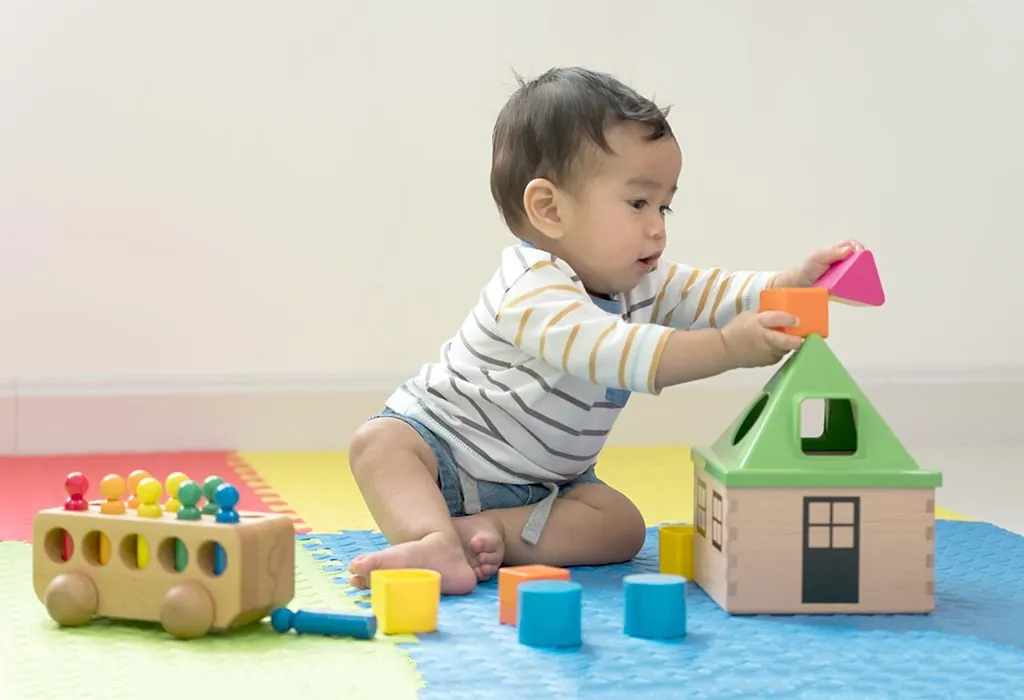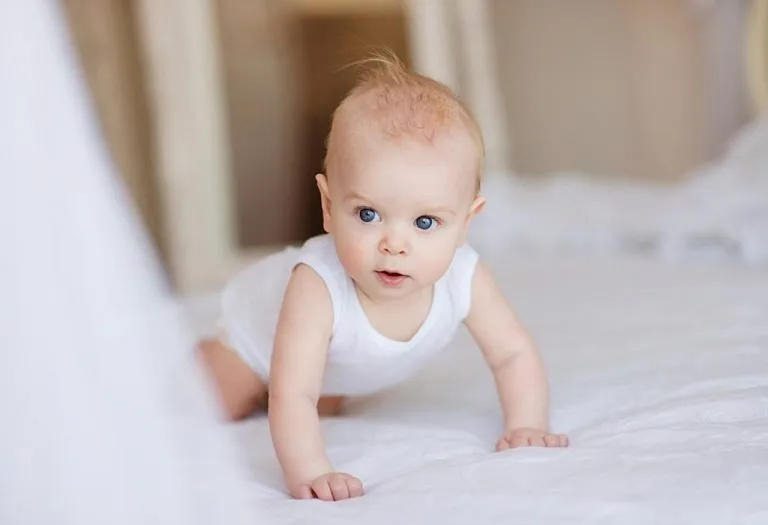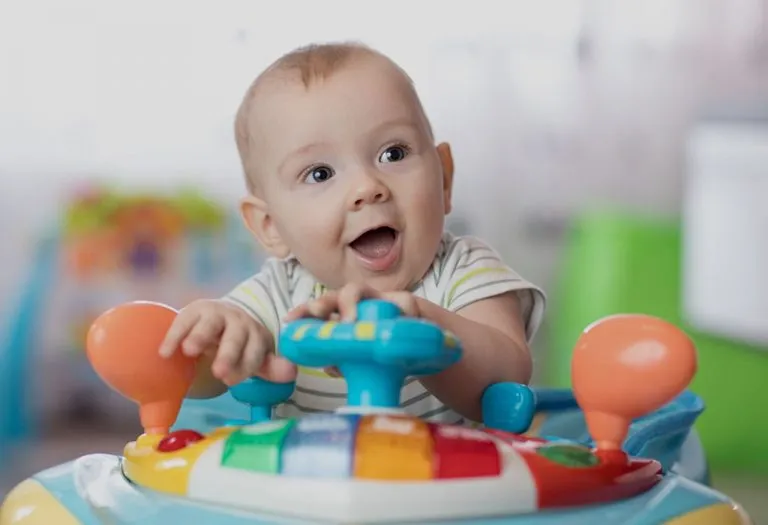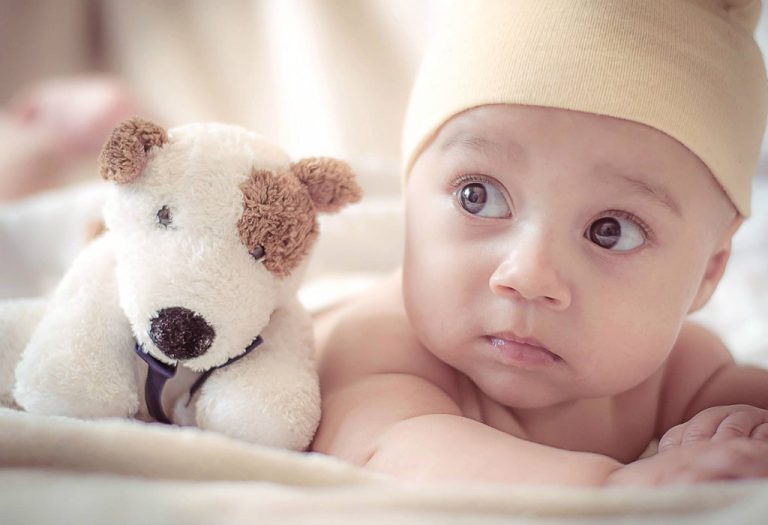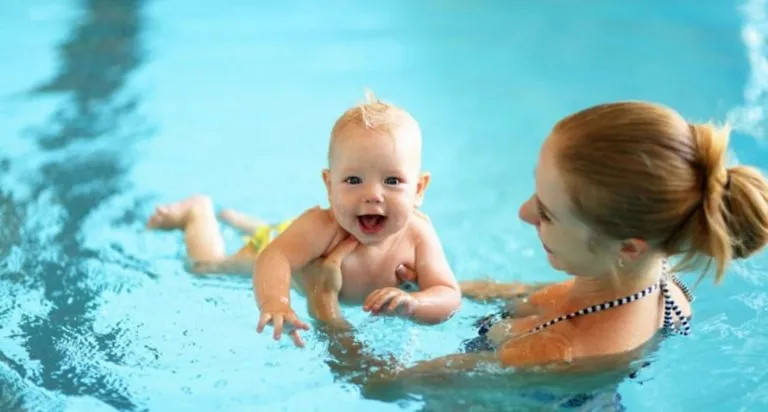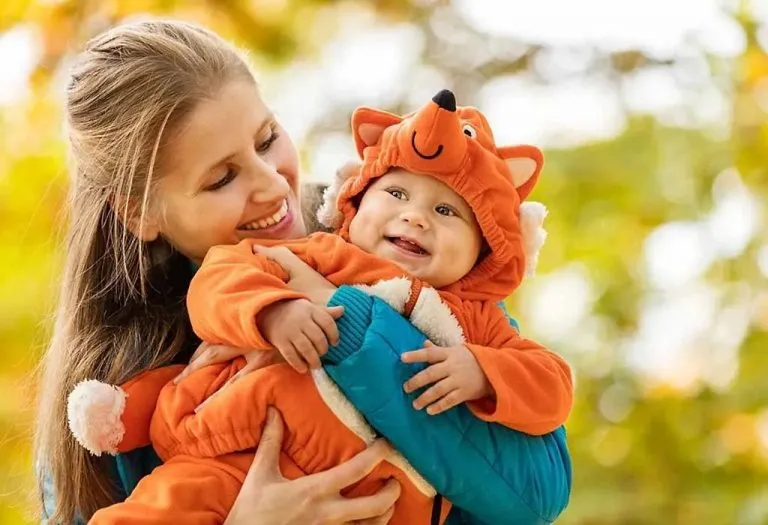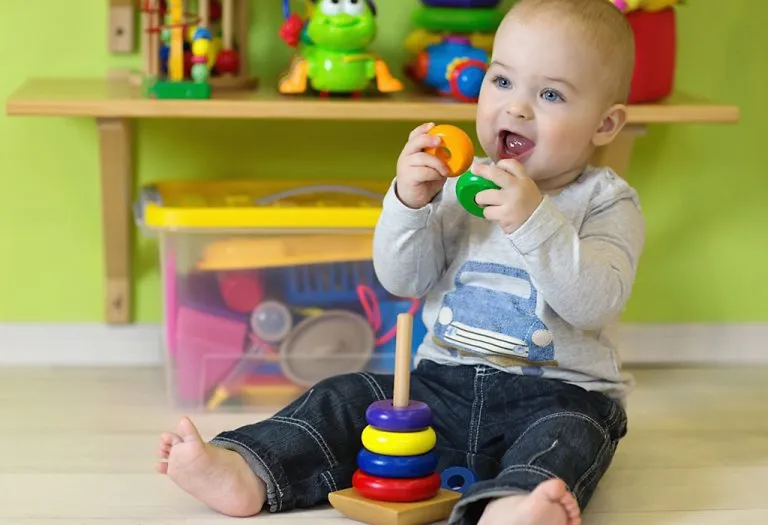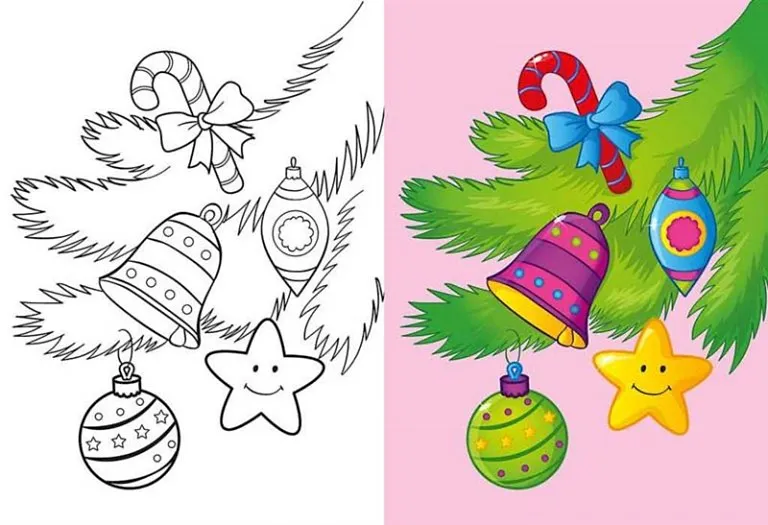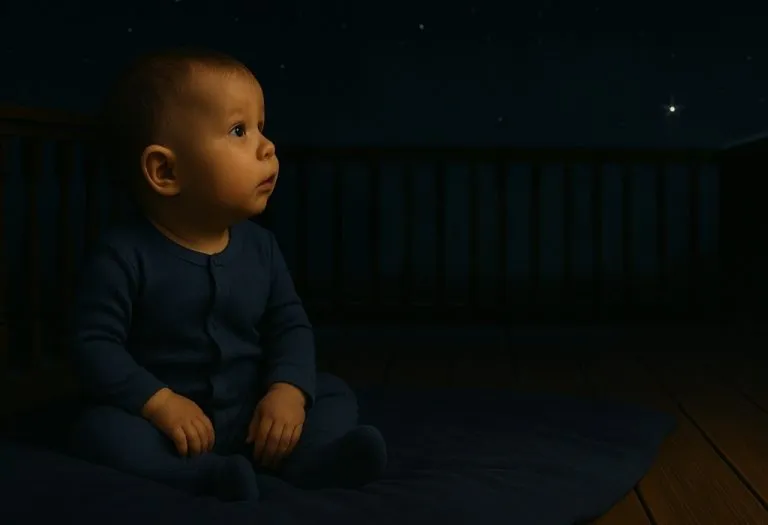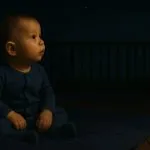Best Fun & Developmental Activities For an 8-Month-Old Baby
There’s a unique charm in observing the fascinating milestones of an 8-month-old baby. From their babbles to their tentative scoots, they are constantly evolving. But as parents, it’s natural to wonder how we best support our baby’s growth. This article unfolds some of the best indoor, sensory, and educational activities for 8-month-old babies that promise fun and bolster development.
The eighth month of a baby’s life marks an explosion of physical and cognitive skills. This period sees your little one trying to sit without support, perhaps crawling or at least showing intentions to, and displaying an intense curiosity about the world. It is crucial to introduce activities that foster their development while ensuring they have a great time. Dive in to discover some enriching 8-month-old activities.
Development Boosting Activities For 8-Month-Old Babies
The eighth month of a baby’s life is like opening a window to a world filled with wonders. Their rapid development during this period warrants activities that keep pace with their boundless curiosity and burgeoning skills. Fortunately, there are a plethora of 8-month-old baby activities designed specifically for this phase. Parents can ensure that their little ones are constantly learning and having a blast by incorporating educational and indoor activities. Let’s explore some of these activities that promise fun and learning, including sensory activities for 8-month-olds.
1. Peek-a-Boo!
- Why: Introduces the concept of object permanence (1).
- How: Playfully hide your face behind your hands or a cloth and then reveal it with a cheerful “peek-a-boo!”
2. Sensory Bags
- Why: Encourages tactile exploration and improves fine motor skills (2).
- How: Fill ziplock bags with gel, rice, or beans and let the baby feel the different textures.
3. Sing-along Sessions
- Why: It stimulates the auditory senses and vocal cords and improves language, cognitive, social, and emotional skills (3).
- How: Sing familiar nursery rhymes, encouraging your baby to join with babbles or claps.
4. Crawling Tunnel
- Why: Strengthens muscles, supports mobility, improves gross motor skills, and develops sensory perception (4).
- How: Use soft cushions to make a makeshift tunnel, or get a play tunnel for your baby to crawl through.
5. Mirror Play
- Why: Encourages self-awareness (5) and cognitive development.
- How: Place a baby-safe mirror before them and let them observe their reflection.
6. Ball Roll
- Why: Enhances hand-eye coordination and gross and fine motor skills (6).
- How: Sit opposite your baby and gently roll a soft ball towards them.
7. Stacking Soft Blocks
- Why: Fosters understanding of balance and spatial relations, gross and fine motor skills, hand-eye coordination/dexterity, and problem-solving skills (7).
- How: Provide large soft blocks and encourage your baby to stack them up.
8. Textured Toy Exploration
- Why: Offers sensory stimulation and development of gross and fine motor, cognitive, and social skills (8).
- How: Introduce toys with different textures and materials for tactile development.
9. Storytime with Touch & Feel Books
- Why: Develops listening skills and enhances tactile senses (9).
- How: Read colourful touch-and-feel books that offer varied textures on each page.
10. Shake & Rattle
- Why: Strengthens grip/ motor skills and stimulates auditory senses (10).
- How: Hand them baby-friendly rattles or homemade shakers filled with rice or beans.
11. Floor Play with Toys
- Why: Encourages mobility, core strength, exploration, and independence (11).
- How: Spread out various toys at a slight distance and motivate them to reach or crawl towards them.
12. Puzzle Boards
- Why: Introduces basic problem-solving skills, sequencing, fine motor skills, and hand-eye coordination (12).
- How: Offer simple wooden-shaped puzzles suitable for their age.
13. Water Play
- Why: It introduces the concept of liquid, stimulates tactile senses, and improves well-being and creativity (13).
- How: Fill a small tub with lukewarm water, introduce splash-friendly toys and supervise closely.
14. Finger Painting
- Why: Fosters creativity and sensory exploration (14).
- How: Use edible, baby-safe paints and let them smear and play on a large sheet.
15. Dance & Wiggle
- Why: Boosts balance and spatial awareness and introduces rhythm (15).
- How: Play gentle tunes and dance with your baby, holding them or letting them wiggle on the floor.
Introducing these indoor activities ensures that your baby remains entertained, engaged, and educated within the comfort and safety of your home. Each has its unique blend of fun and learning, making them perfect for an 8-month-old’s development journey.
FAQs
1. What you should expect from your 8-month-old?
Your baby will be more active and curious at eight months. Expect them to try sitting without support, begin showing signs of crawling, babble more coherently, show recognition towards familiar people and objects, and express emotions like joy, fear, and anger. Your baby’s activity at 8 months will centre around exploring toys, responding to their name, and developing a solid bond with primary caregivers.
2. How can you develop a sense of object permanence in an 8-month-old?
Developing a sense of object permanence is pivotal at this age. Start with games like Peek-a-Boo. When playing, cover a toy with a cloth and reveal it after a moment, demonstrating that objects still exist even when not in sight. Consistent exposure to such indoor activities helps solidify this concept in their young minds.
As your baby approaches the end of their first year, treasure these moments of growth and exploration. Tailor these activities according to your baby’s preferences and watch them blossom. The activities listed above are not just fun but foundational, setting the stage for continuous learning and discovery. Happy parenting!
References/References:
1. Peek A Boo; Parent Trust for Washington Children; https://www.parenttrust.org/2017/07/12/peek-a-boo/
2. Ratnam, G.; Sensory Bags for Children – Importance and Easy DIY Crafts; FirstCry; https://parenting.firstcry.com/articles/sensory-bags-for-children-importance-and-easy-diy-crafts/; September 2020
3. Four benefits of singing with young children; Community Early Learning Australia; https://www.cela.org.au/publications/amplify!-blog/jan-2023/four-benefits-of-singing-in-early-childhood
4. The 9 Best Toddler Crawling Tunnels of 2023; Wonder Baby; https://www.wonderbaby.org/articles/crawling-tunnel
5. Reflecting on babies and mirror play; First Things First; https://www.firstthingsfirst.org/first-things/reflecting-on-babies-and-mirror-play/
6. Infant and Toddler Activity Pages: Roll the Ball; MSU Child and Family Development; https://www.canr.msu.edu/resources/infant-and-toddler-activity-pages-roll-the-ball
7.
8. What Is Sensory Play? The Benefits for Your Child and Sensory Play Ideas; Cleveland Clinic; https://health.clevelandclinic.org/benefits-of-sensory-play-ideas; March 2022
9. Why you should share “touch and feel” books; First 5 Forever; https://www.slq.qld.gov.au/first5forever/blog/why-you-should-share-touch-and-feel-books; June 2021
10. Paulus, M., Hunnius, S., van Elk, M., and Bekkering, H.; How learning to shake a rattle affects 8-month-old infants’ perception of the rattle’s sound: electrophysiological evidence for action-effect binding in infancy; Dev Cogn Neurosci; https://www.ncbi.nlm.nih.gov/pmc/articles/PMC6987660/; January 2012
11. When and Why Baby Should Play on the Floor; Pathways; https://pathways.org/when-why-baby-play-on-floor/
12. Five Things Children Gain from Puzzle Play; Illinois Early Learning Project; https://illinoisearlylearning.org/blogs/growing/puzzle-play/
13. The benefits of water play for children’s development; St. Nicholas; https://stnicks.org.au/news/the-benefits-of-water-play-for-childrens-development/
14. 8 Ways Finger Painting Helps Children’s Development; Fraser; https://www.fraser.org/resources/blog/8-ways-finger-painting-helps-childrens-development
15. Benefits of dance for early literacy and development; State Library of Queensland; https://www.slq.qld.gov.au/first5forever/blog/benefits-dance-early-literacy-and-development
Also Read:
Best Activities for 9 Months Old Infants
Best Learning Activities for 7-Month-Old
Was This Article Helpful?
Parenting is a huge responsibility, for you as a caregiver, but also for us as a parenting content platform. We understand that and take our responsibility of creating credible content seriously. FirstCry Parenting articles are written and published only after extensive research using factually sound references to deliver quality content that is accurate, validated by experts, and completely reliable. To understand how we go about creating content that is credible, read our editorial policy here.






